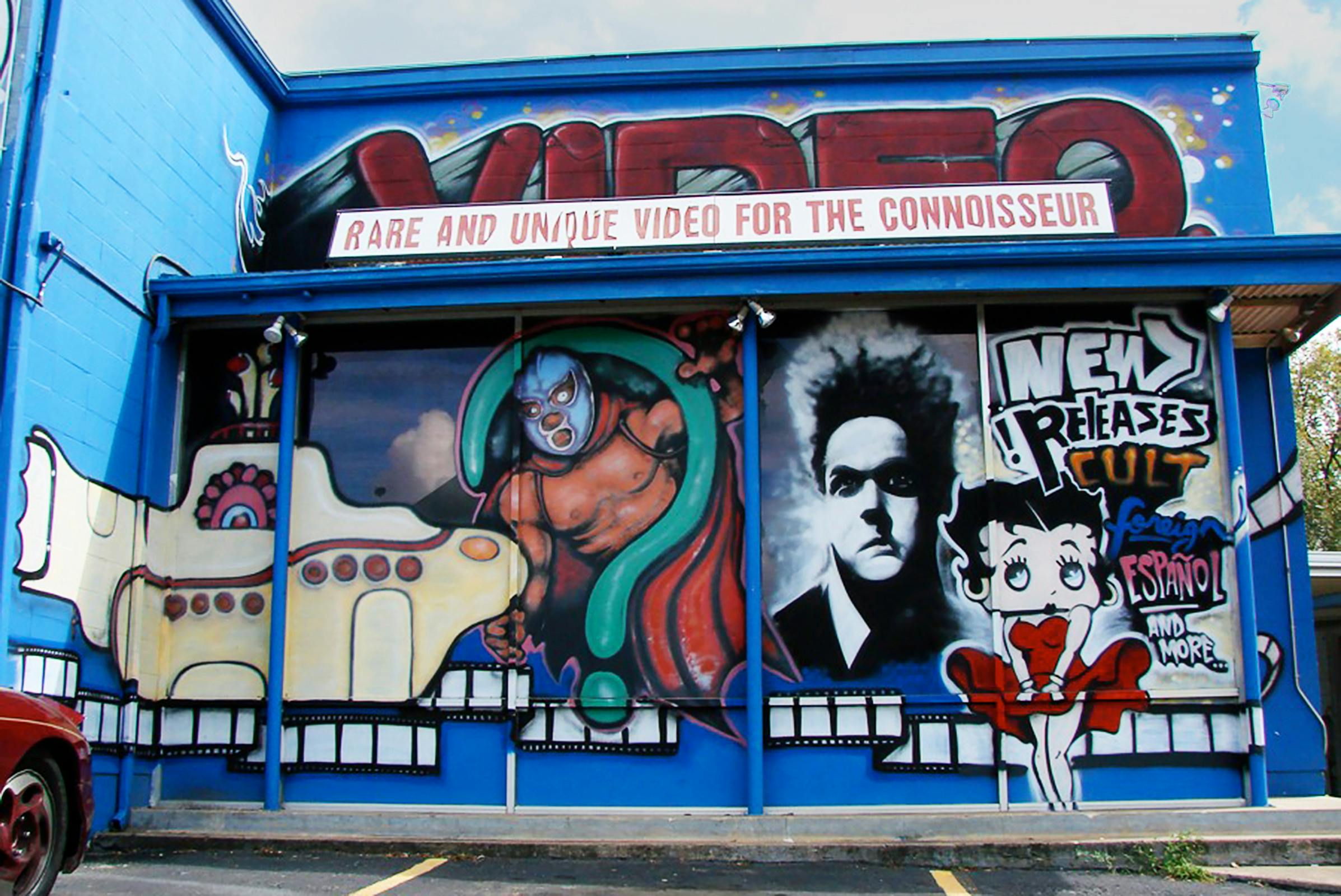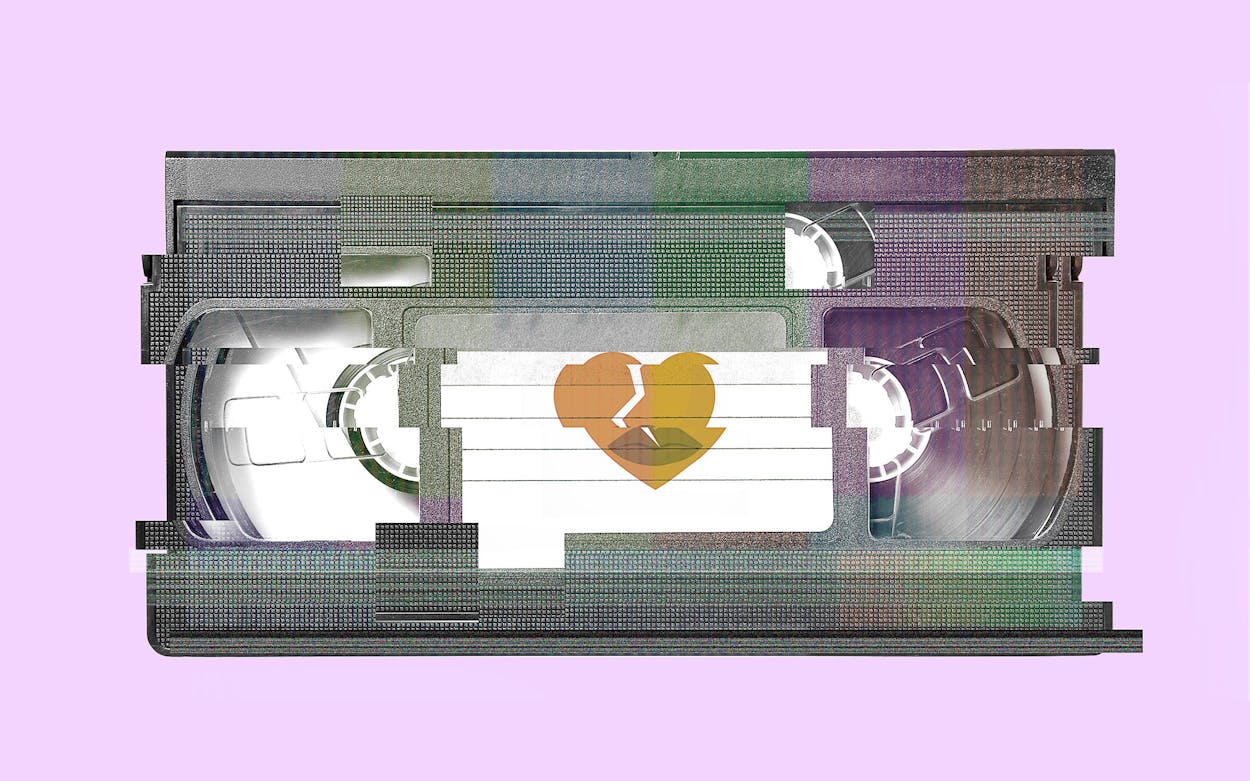In early September, Conrad Bejarano, the owner of I Luv Video, announced that the beloved Austin video store would be closing permanently. Home to more than 130,000 rare videotapes, DVDs, and Blu-rays, the store is a casualty of both the declining fortunes of video stores and the retail gut-punch caused by COVID-19.
Founded in 1985 as home video was replacing repertory theaters as the way movie fans viewed old movies and learned cinema history, I Luv Video was once a dominant video shop in Austin, at one time sporting five locations. Now, it’s the second Austin institution of its kind to close within the previous six months: in April, Vulcan Video, a similarly esoteric and well-stocked stop for central Texas movie nerds, closed permanently. (Alamo Drafthouse announced in late October that it had acquired the Vulcan Video collection and that it would eventually find a home at the popular theater chain’s South Lamar location.)
Since the closing was announced, Bejarano has been deliberating on who might be the best candidate to take care of this massive collection, which he wants to keep together and accessible to the public. “My only stipulation,” Bejarano wrote in the Facebook post announcing the store’s closure, “is that whomever [purchases this collection] gives the community access to our vast video library.”
Following the news of I Luv Video’s passing, discussion quickly turned to what might happen to this singular collection, and whether a public or University of Texas library might be able to acquire it rather than a private collector. On its face, this seems like an excellent idea. What could be a better outcome than having everything from the works of Hitchcock and Ozu to Roger Corman and Ed Wood available for free to the people? What’s more, in a world where a small number of studios and streaming services control access to the world’s cinema, physical media seems more important than ever, at least as an archival medium. (Disney now controls 20th Century Fox’s catalog, for instance, which means Disney can remove or promote a recent competitor’s work, allow film or digital prints to be rented to theaters, keep titles in physical print on Blu-ray, etc.) The collection also contains thousands of genre pictures that were released on VHS only, the majority of which never made the jump to DVD or Blu-ray, let alone into the rotation of streaming services.
While a collection such as I Luv Video’s rightfully deserves to be housed, cared for, and made available both for future scholars and the public at large, it’s unlikely that a local institution would be able to make it happen.
“Acquisitions like this are tough,” says Jennifer Lee, the director of discovery and access for the UT library system. As she explains, it’s not even acquisition itself that’s the real barrier, but rather the labor and budget required to process the collection—especially within a discipline that is already struggling to find resources to keep afloat.

Aside from the money required to buy the collection in the first place, there’s the matter of cataloging it, keeping it stored in a climate-controlled environment, having equipment to view it on, and maintaining that equipment, among other factors. The UT library system has 50 percent of the staff it had ten to fifteen years ago, Lee says, and so making “big acquisitions as purchase or as gifts are a challenge in terms of staff to process them.” A special collection, such as the Harry Ransom Center, “would fund-raise to pay for the acquisition, to fund all or a portion of the work for maintenance,” she says. “But again, with a collection that large, adding each individual item is an awful lot of work.”
Space is also at a premium in libraries, so the question of how and where a person would ever view them is an issue. And even if a library weren’t lending the material to the public, there is a chain of issues, ranging from “collecting and transporting it, storing it somewhere in a way that you can maintain some order, find and access the material on demand, all while maintaining playback equipment, which is an expense in itself,” Lee says.
Alexia Thompson-Young, the assistant director of scholarly resources at UT, notes that libraries have to respond to market demands. “Of course, it makes sense a collection like this should be at a library and loaned to the public,” she says. “But even without COVID-19 restrictions in place, students and faculty and staff want videos streamed. And so streaming video is where we need to put our resources.” Even Noah Isenberg, chair of the Radio Television Film department at UT, says that such an acquisition would be “utopian” and not the most viable given the ease of streaming. “I watch movies all the time, I teach movies all the time, I have a huge collection of films on DVD, and even I tend to stream everything on something like the Criterion Channel,” he says. (In 2017, the Daily Dot cited a survey that noted that only 17 percent of Americans still have a VCR, down from an estimated 58 percent in 2014.)
While a private university might not have to jump through the budgetary hoops of a public institution, it can’t bend the laws of physics either—particularly the fact that VHS tapes will deteriorate over time. “I certainly can’t speak for the university,” says Travis Williams, archivist for St. Edward’s University in Austin. “But sure, in my heart, it’s a ‘yes.’ But then you have to worry about VHS tapes, which are extremely problematic in that they will eventually decay and need to be kept in climate-controlled storage. And our students don’t have DVD players in their laptops.”
As of mid-October, Bejarano had continued to field calls about I Luv Video’s many tapes and DVDs. He says he hasn’t been contacted by libraries or institutions about the video trove, but scores of private collectors remain interested in acquiring the collection.
But for Bejarano, the collection’s physical nature is part of its importance. So is its accessibility. “As a video store, I purchased that content to be shown to the public,” he says. “You store it publicly, the public has access to it.” It’s especially important, he says, from a historical standpoint that his collection remains intact. “The studios are very excited to be in control of the content [via streaming]. I think within five years, they’re gonna stop producing DVDs entirely. And then parts of film history start vanishing.”






